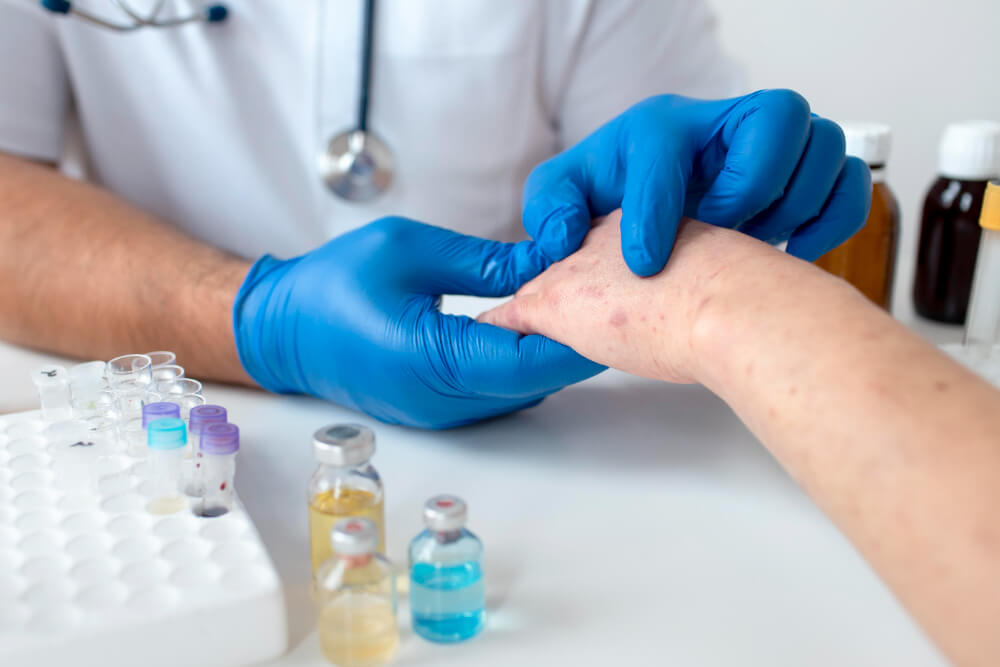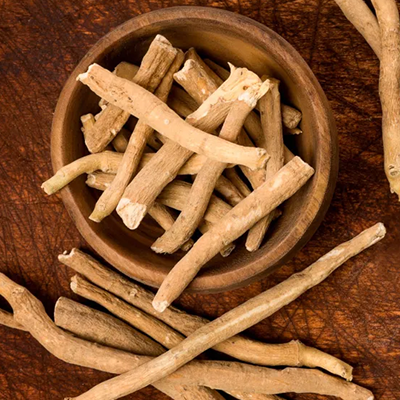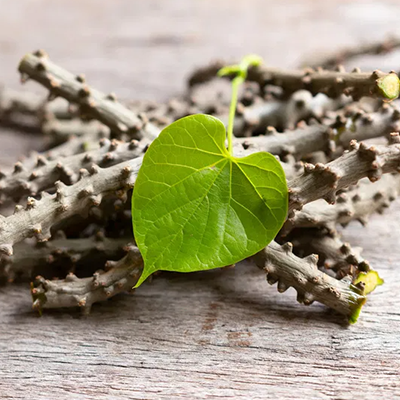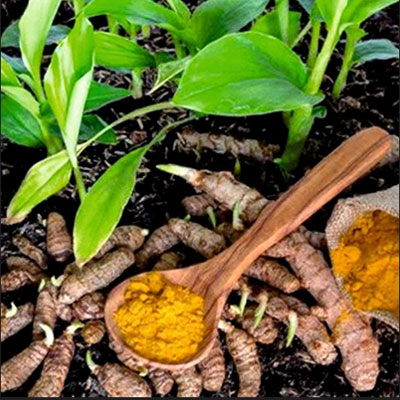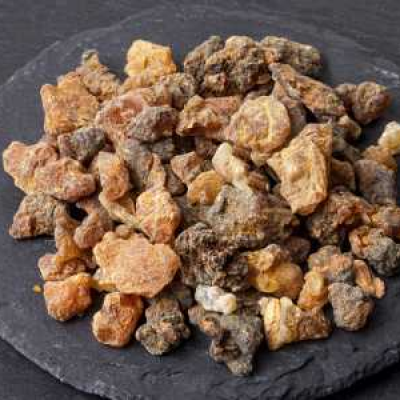Scleroderma is a chronic autoimmune disease that causes abnormal growth of connective tissue, leading to hardening and tightening of the skin. It can also affect internal organs, blood vessels, and the digestive system. The disease varies from mild, localized forms to severe, systemic types that can be life-threatening.
Causes of Scleroderma
The exact cause of scleroderma is unknown, but several factors may contribute:
- Autoimmune Response: The immune system mistakenly attacks healthy tissues, causing inflammation and fibrosis (thickening of tissue).
- Genetics: Family history can increase susceptibility.
- Environmental Triggers: Exposure to certain chemicals, such as silica dust or industrial solvents.
- Hormonal Factors: More common in women, suggesting a hormonal link.
Types of Scleroderma
Localized Scleroderma
Affects only the skin, and sometimes underlying muscles and bones.
Subtypes include:
- Morphea: Patches of thickened, discoloured skin.
- Linear Scleroderma: Bands of hardened skin, often on the limbs or face.
Systemic Scleroderma (Systemic Sclerosis)
Affects the skin and internal organs like the lungs, kidneys, heart, and digestive tract.
Subtypes include:
- Limited Cutaneous Systemic Sclerosis: Involves the skin on the hands, face, and lower arms. Also linked to CREST syndrome (Calcinosis, Raynaud's phenomenon, Oesophageal dysfunction, Sclerodactyly, and Telangiectasia).
- Diffuse Cutaneous Systemic Sclerosis: Rapid progression involving larger areas of the skin and major organs.
Signs and Symptoms of Scleroderma
Skin Symptoms
- Tight, shiny, thickened skin, especially on the fingers, hands, and face.
- Patches of discoloration or hard skin.
- Itching or discomfort in affected areas.
Raynaud’s phenomenon
- Fingers or toes turn white or blue in response to cold or stress due to poor blood flow.
Joint and Muscle Symptoms
- Stiffness, pain, and swelling in the joints.
- Weakness in muscles.
Digestive Symptoms
- Difficulty swallowing.
- Acid reflux or heartburn.
- Bloating, diarrhoea, or constipation.
Organ Involvement
- Lungs: Shortness of breath or scarring.
- Heart: Irregular heartbeat or heart failure.
- Kidneys: High blood pressure or kidney failure.
Blood Vessel Symptoms
- Telangiectasia (small, widened blood vessels visible on the skin).
Diagnosis of Scleroderma
- Physical Examination: Assessing skin changes and symptoms
- Blood Tests: Check for autoantibodies like antinuclear antibodies (ANA)
- Imaging Tests: X-rays or CT scans for lung involvement.
- Echocardiogram for heart issues.
- Skin Biopsy: Examining a small skin sample for abnormalities.
- Pulmonary Function Tests: To assess lung capacity.
Ayurvedic Perspective on Scleroderma
In Ayurveda, scleroderma can be linked to an imbalance of the Tridoshas (Vata, Pitta, and Kapha). It is often associated with Vata Prakopa (aggravation of Vata) and Kapha Dushti (Kapha imbalance) leading to hardening of tissues and poor circulation. Accumulation of Ama (toxins) and impaired Agni (digestive fire) further aggravate the condition, disrupting normal tissue metabolism (Dhatu Agni).
Ayurvedic Treatment for Scleroderma
The treatment focuses on detoxifying the body, balancing doshas, and rejuvenating tissues.
Detoxification (Shodhana)
- Virechana (Purgation): Removes accumulated toxins and pacifies Pitta dosha.
- Basti (Medicated Enema): Balances Vata and nourishes tissues. Herbal oils or decoctions like Dashamoola are used.
External Therapies
- Abhyanga (Oil Massage): Using medicated oils like Ksheerabala Taila or Mahanarayana Taila to improve blood circulation and soften hardened tissues.
- Swedana (Herbal Steam Therapy): To reduce stiffness and enhance blood flow.
- Takradhara: Pouring medicated buttermilk on the forehead to reduce stress and inflammation.
Dietary Recommendations (Ahara)
A balanced diet that supports digestion and pacifies Vata and Kapha is essential:
What to Include:
- Warm, freshly cooked, and easily digestible foods.
- Ghee and sesame oil for internal lubrication.
- Spices like ginger, black pepper, and turmeric to enhance digestion.
- Green leafy vegetables, nuts, and seeds for essential nutrients.
- Herbal teas, such as ginger tea or Tulsi tea, to support circulation.
What to Avoid:
- Cold, dry, or stale foods that aggravate Vata.
- Excessive dairy, sugar, or oily foods that increase Kapha.
- Processed or packaged foods and carbonated drinks.
Lifestyle Modifications (Vihara)
Follow a consistent schedule for sleeping, eating, and physical activity.
Perform self-massage with warm medicated oils to improve circulation and reduce stiffness.
Exercise and Yoga: Gentle exercises to maintain flexibility and strength. Recommended yoga poses:
- Tadasana (Mountain Pose): Improves posture and blood flow.
- Bhujangasana (Cobra Pose): Strengthens the back and relieves stiffness.
- Shavasana (Corpse Pose): Promotes relaxation and reduces stress.
Stress Management:
- Practice meditation and Pranayama (breathing techniques) like Anulom Vilom to calm the mind and regulate the immune system.
- Avoid excessive stress, as it can worsen autoimmune conditions.
Herbal Remedies
Ashwagandha (Withania somnifera)
Strengthens the immune system, reduces inflammation, and nourishes tissues.
Guduchi (Tinospora cordifolia)
Detoxifies the body, improves immunity, and pacifies all three doshas.
Manjistha (Rubia cordifolia)
Purifies the blood, reduces skin discoloration, and combats inflammation.
Amalaki (Indian Gooseberry)
A rich source of Vitamin C; boosts immunity and reduces oxidative stress
Haridra (Turmeric)
Contains curcumin, which is anti-inflammatory and antioxidant.
Guggulu (Commiphora mukul)
Reduces stiffness and supports healthy joint and tissue function.
Rejuvenation Therapy (Rasayana)
Chyawanprash:
An herbal formulation to rejuvenate tissues, improve immunity, and slow the progression of scleroderma.
Bala (Sida cordifolia):
Strengthens tissues and supports the nervous system.
Shatavari (Asparagus racemosus):
Nourishes the body and balances hormones, especially in women.
Scleroderma requires a personalized approach in Ayurveda, as the treatment depends on the dosha imbalance and severity of the condition. While Ayurvedic remedies can help manage symptoms, they work best when integrated with modern medicine, especially in severe or systemic cases. Regular monitoring by a healthcare professional is essential.


